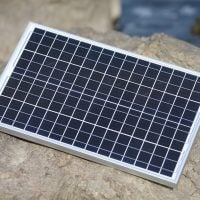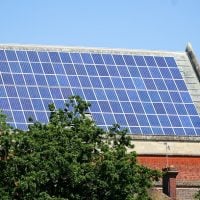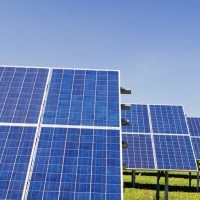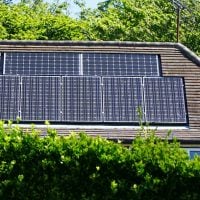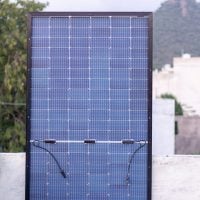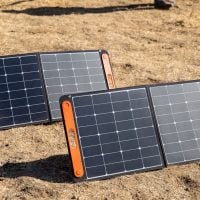In recent years, the global shift towards renewable energy has gained unprecedented momentum, with solar energy emerging as a frontrunner in this transition. Solar energy project proposals are essential documents that outline the vision, objectives, and implementation strategies for harnessing solar power. These proposals serve as a roadmap for stakeholders, including investors, government agencies, and community members, to understand the potential impact and feasibility of solar projects.
Crafting a compelling proposal is not merely about presenting technical data; it is about weaving a narrative that resonates with the audience and highlights the transformative potential of solar energy. A well-structured solar energy project proposal can be the difference between securing funding and seeing a project stall. It must effectively communicate the project’s purpose, the benefits it will bring, and the steps necessary to achieve its goals.
As NGOs increasingly engage in renewable energy initiatives, understanding how to create a persuasive proposal becomes crucial. This article will guide NGO professionals through the essential components of a solar energy project proposal, providing actionable tips and real-world examples to enhance their effectiveness. Are You Working on Solar Innovation or Clean Energy Access? Join us to receive updates.
Understanding the Needs of the Client
Before embarking on the proposal writing process, it is vital to have a deep understanding of the client’s needs and expectations. Engaging with stakeholders through interviews, surveys, or focus groups can provide invaluable insights into their priorities and concerns. For instance, if the client is a local government looking to reduce energy costs, the proposal should emphasize how the solar project can lead to significant savings over time.
Conversely, if the client is a community organization focused on environmental sustainability, the proposal should highlight the ecological benefits of transitioning to solar energy. Additionally, understanding the client’s financial constraints and funding sources is crucial. Some clients may have access to grants or subsidies that can offset initial costs, while others may require a more detailed financial plan to attract private investment.
Tailoring the proposal to address these specific needs not only demonstrates attentiveness but also increases the likelihood of approval. By aligning the project objectives with the client’s goals, NGO professionals can create a compelling case for support.
Conducting Thorough Research and Analysis
A successful solar energy project proposal is grounded in thorough research and analysis. This involves assessing the local solar energy landscape, including available resources, regulatory frameworks, and potential barriers to implementation. For example, understanding local zoning laws and permitting processes can help identify any challenges that may arise during project execution.
Additionally, analyzing historical data on solar energy production in the area can provide insights into expected performance and return on investment. Market analysis is another critical component of this research phase. Identifying potential competitors and understanding their offerings can help position your proposal more effectively.
Furthermore, engaging with local communities to gauge their interest and support for solar initiatives can provide valuable context for your proposal. By presenting well-researched data and insights, NGO professionals can build credibility and demonstrate that they have a comprehensive understanding of the project’s environment.
Developing a Clear and Concise Executive Summary
The executive summary is often the first section that stakeholders will read, making it one of the most critical components of a solar energy project proposal. It should succinctly encapsulate the project’s vision, objectives, and anticipated outcomes in a way that captures attention and encourages further reading. A strong executive summary typically includes an overview of the problem being addressed, a brief description of the proposed solution, and an outline of the expected benefits.
To craft an effective executive summary, NGO professionals should focus on clarity and brevity. Avoid jargon and technical language that may alienate non-expert readers. Instead, use straightforward language that conveys enthusiasm for the project while highlighting its significance.
For instance, if proposing a community solar garden, emphasize how it will provide affordable energy access to low-income households while fostering community engagement. A compelling executive summary sets the tone for the entire proposal and can significantly influence decision-makers.
Outlining the Project Scope and Objectives
Defining the project scope and objectives is essential for establishing clear expectations among stakeholders. The project scope outlines what will be included in the initiative—such as site selection, installation processes, and community engagement efforts—while also delineating what is outside its purview. This clarity helps prevent scope creep and ensures that all parties are aligned on project deliverables.
Objectives should be specific, measurable, achievable, relevant, and time-bound (SMART). For example, an objective might be to install 500 solar panels within 12 months to generate 150 kW of renewable energy for a local school district. By articulating clear objectives, NGO professionals can provide stakeholders with tangible benchmarks for success.
This not only enhances accountability but also allows for easier evaluation of project outcomes once implemented.
Detailing the Technical Design and Implementation Plan
The technical design and implementation plan is where the proposal delves into the specifics of how the solar project will be executed. This section should include details about the technology being used—such as photovoltaic panels or solar thermal systems—as well as information about site assessments, grid connections, and installation timelines. Providing diagrams or schematics can enhance understanding and illustrate how various components will work together.
Moreover, outlining a step-by-step implementation plan helps stakeholders visualize the project’s progression from inception to completion. This plan should include key milestones, responsible parties for each phase, and timelines for completion. For instance, if community engagement is part of the implementation strategy, specify when outreach efforts will occur and how feedback will be incorporated into project design.
A well-articulated technical design not only demonstrates feasibility but also instills confidence in stakeholders regarding your team’s ability to execute the project successfully.
Providing a Comprehensive Cost Analysis and Budget
A comprehensive cost analysis is critical for demonstrating financial viability in a solar energy project proposal. This section should detail all anticipated expenses associated with project development, including equipment costs, labor expenses, permitting fees, and ongoing maintenance costs. Providing a breakdown of these costs allows stakeholders to understand where funds will be allocated and helps identify potential areas for cost savings.
In addition to outlining expenses, it is essential to present a budget that aligns with funding sources and financial projections. This budget should include both initial capital requirements and long-term operational costs. For example, if seeking grants or loans, clearly indicate how much funding is needed upfront and how it will be utilized throughout the project’s lifecycle.
By presenting a transparent financial picture, NGO professionals can build trust with stakeholders and demonstrate their commitment to responsible fiscal management.
Highlighting the Environmental and Social Benefits
One of the most compelling aspects of solar energy projects is their potential to deliver significant environmental and social benefits. In this section of the proposal, it is crucial to articulate how the project aligns with broader sustainability goals—such as reducing greenhouse gas emissions or promoting energy independence. Quantifying these benefits can enhance their impact; for instance, stating that a proposed solar installation will offset X tons of CO2 emissions annually provides concrete evidence of its positive environmental impact.
Social benefits should also be emphasized, particularly in terms of community engagement and job creation. Highlighting how local residents will be involved in installation or maintenance can foster community buy-in and support for the project. Additionally, discussing educational opportunities related to renewable energy can further enhance social value by empowering community members with knowledge about sustainable practices.
By showcasing both environmental and social benefits, NGO professionals can create a compelling narrative that resonates with diverse stakeholders.
Addressing Potential Risks and Mitigation Strategies
Every project comes with inherent risks that must be acknowledged in a solar energy proposal. Identifying potential challenges—such as regulatory hurdles, financing issues, or technological failures—demonstrates foresight and preparedness. However, simply listing risks is not enough; it is equally important to outline mitigation strategies that will be employed to address these challenges proactively.
For example, if there are concerns about fluctuating material costs impacting budget projections, proposing fixed-price contracts with suppliers can help mitigate this risk. Similarly, if regulatory changes are anticipated during project execution, establishing strong relationships with local authorities can facilitate smoother navigation through permitting processes. By addressing risks head-on and presenting thoughtful mitigation strategies, NGO professionals can instill confidence in stakeholders regarding their ability to manage uncertainties effectively.
Demonstrating Expertise and Experience
To gain stakeholder trust and confidence in a solar energy project proposal, it is essential to demonstrate expertise and experience in renewable energy initiatives. This section should highlight relevant qualifications of team members—such as certifications in solar technology or previous successful projects—alongside any partnerships with reputable organizations or experts in the field. Including case studies or testimonials from past projects can further bolster credibility by showcasing tangible results achieved through similar initiatives.
For instance, if your organization previously implemented a successful community solar program that increased access to renewable energy for low-income households, sharing metrics from that experience can illustrate your capacity for delivering impactful projects. By effectively showcasing expertise and experience, NGO professionals can position themselves as trusted leaders in renewable energy advocacy.
Concluding with a Call to Action and Next Steps
The conclusion of a solar energy project proposal should serve as both a summary of key points discussed throughout the document and a call to action for stakeholders. Reiterating the project’s significance while inviting stakeholders to engage further—whether through meetings or discussions—can create momentum toward securing support. Additionally, outlining next steps provides clarity on what actions are required moving forward.
This could include scheduling follow-up meetings to discuss funding opportunities or initiating community outreach efforts to gauge public interest in the proposed project. By concluding with a strong call to action and clear next steps, NGO professionals can inspire stakeholders to take an active role in advancing renewable energy initiatives within their communities. In summary, crafting an effective solar energy project proposal requires careful consideration of various components—from understanding client needs to detailing technical designs and addressing risks.
By following these guidelines and incorporating actionable strategies into their proposals, NGO professionals can enhance their chances of success in securing support for transformative solar initiatives that benefit both people and the planet.
When crafting a compelling solar energy project proposal, it’s essential to consider the broader environmental and community impact of your project. A related article that might provide valuable insights is the Kettering Town Council’s Environmental Grants in the UK. This article discusses funding opportunities aimed at supporting environmental initiatives, which can be a useful reference for understanding how to align your solar energy project with community and environmental goals. For more information, you can read the full article here.

